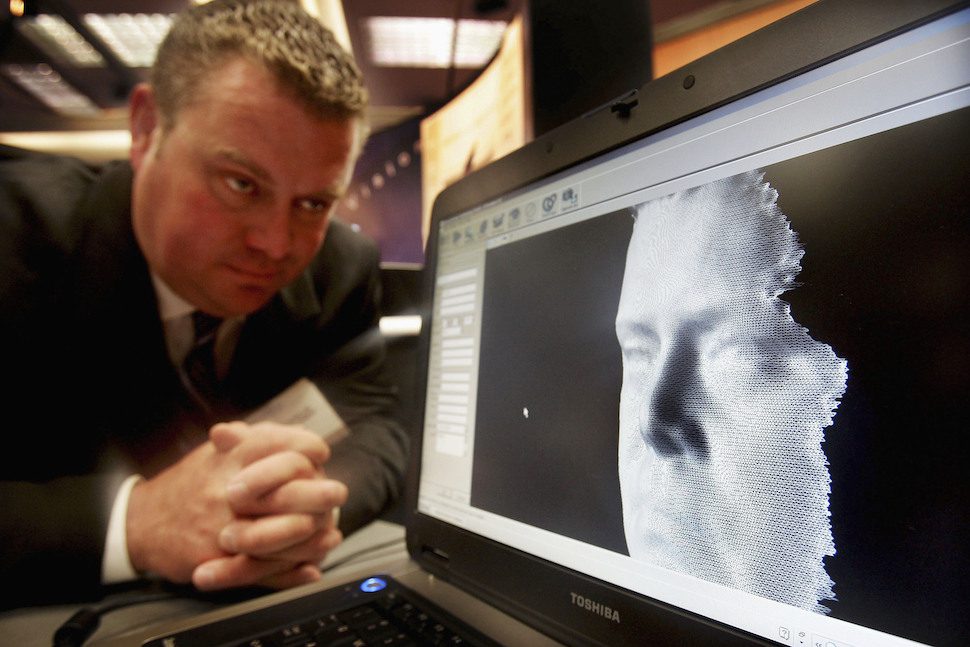Some Los Angeles residents and activists were alarmed earlier this year when the Los Angeles Police Commission allowed the continued use of facial recognition by the LAPD. The facial recognition system is operated by The Los Angeles County Regional Identification System [LACRIS], and the Los Angeles County Sheriff’s Department manages how it’s used. LACRIS is “responsible for the identification of all criminals arrested in the County … The technology is used by 64 law enforcement agencies in over 150 locations throughout the County of Los Angeles.”
According to the New York Times, during a testing period of Amazon’s facial recognition technology, it incorrectly identified 28 members of Congress with people who had been arrested.
Despite how faulty the technology has proven to be, many Americans trust law enforcement in their use of such technology. According to a Pew Research Center study from 2019, 56 percent of Americans trust that police officers will use this technology responsibly.
YR Media spoke with Sergeant John Denney of the L.A. County Sheriff’s Department to discuss how LACRIS technology works, how police officers use it, and whether or not people should be concerned.
This interview was edited for clarity and length.
Pratham Dalal: Can you explain how the LACRIS System works?
Sgt. John Denney: Previously, the photograph or the mug shot, as it’s called, would be placed into a book. When a detective was investigating a crime and the victim or witness would give a description of the suspect, they would flip through this mug book and try to find similar people based on the description given and then present those images to the victim and do a lineup.
The digital mugshot system is now digitized. Photos are collected, they’re placed into a repository and investigators now are flipping through the photos on their computer as opposed to a book with millions of suspect image photos.
PD: How long can someone’s picture remain in that digitized mugshot book?
JD: If somebody is arrested and convicted of the crime and then they go back and get their record sealed through the court, then our system seals the image.
The system will then send that email to any detective in Los Angeles County saying this person’s photo and the record was sealed by the courts, please destroy any copies that you have.
PD: When will people’s mugshot and data be used or accessed?
JD: First and foremost, they have to realize that any data and images that they’re looking at in our digital mugshot system fall under the C.O.R.I. act, which is Criminal Offender Record Information. You have to have the need to know and the right to know. You can’t just search the system just because. [Officers] have to be investigating an active criminal case and have a reason to do that. And we document their reasoning.
So everything in the system is criminal in nature. Any law enforcement agency in Los Angeles County has access to the tools once they are trained. And they sign the user agreements. [Officers] have access to conduct their own searches, conduct their own audits, and then we at LACRIS audit them additionally to ensure that we’re in compliance with the state audit that is conducted
We [also] do not have any open source databases. So, for example, there are some third-party companies that we do not use that have access to third party images, whether that’s Facebook, Instagram, Twitter, Google images
So everything is documented. And it’s all in criminal nature there. Everything [officers] put in [the system] is from a crime, whether that’s images from a Ring camera when the victim gave [a photo] to the police officer in the field [and] said, “Hey, this is the person that walked up to my porch and stole my package.” That’s the photo that you’d be searching [in the mugshot database], trying to find a known suspect in the system.
PD: What is the purpose of facial recognition?
JD: Facial recognition is only a tool to create an investigative lead, the only time that you can identify somebody legally is with fingerprints or DNA. So when you conduct a facial recognition search it’s going to give you a list of potential candidates that you, as the detective or investigator, have to do more work on. Go talk to the person, go see where they live, where they work. Anything that you have the probable cause in your investigation to do and then develop your own probable cause to make the arrest. You cannot do it solely on a facial recognition search because it is not identification. Our system can’t do it.
PD: What can you say to minority groups concerned that this system may be used to target them?
JD: The true definition of surveillance is to actively follow somebody. Our system does not have the capabilities nor the option for an investigator, for me — even working for LACRIS — to surveil anybody. You take a photo, a still image and you search our photo repository and it gives you back a candidate list of images that the system based on those pixels and the template thinks would help you in your investigation, and then that is when the real work for the detective and investigator begins. The system is only being used during a criminal investigation against a database of criminal mugshots. And there is no surveillance, there’s no following, there’s no video camera.
